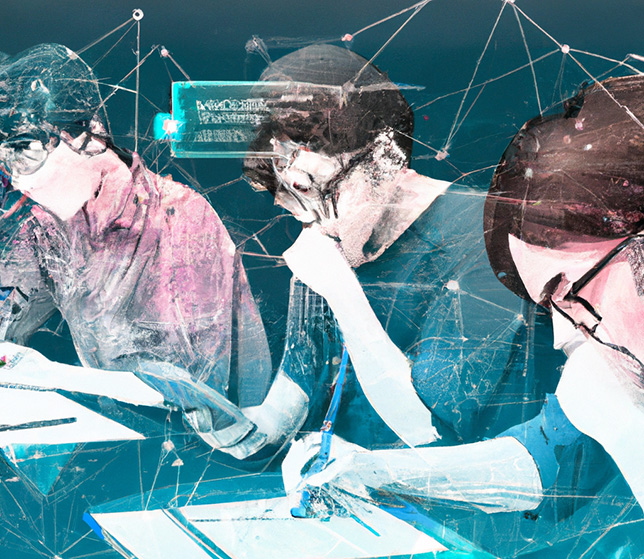AI Tools in Education: Doing Less While Learning More
A Q&A with Mark Frydenberg
What do students need to know, to use AI tools effectively? How does AI affect assessment? What new skills will our graduates carry with them to their future employment? Here, Mark Frydenberg, a Distinguished Lecturer of Computer Information Systems and director of the CIS Sandbox at Bentley University, shares his experiences using AI in education.

Image generated by Dall-E
"AI tools can do things for our students, but, importantly, these tools can at the same time help students learn more." —Mark Frydenberg
Mary Grush: There are so many AI tools in use now… Are educators stepping up to try them in the classroom?
Mark Frydenberg: By now most of us have tried at least a few AI tools — such as ChatGPT, Dall-E, Codex, Microsoft's Copilot, and more — and we've been amazed with the results. These tools can write anything, from Python to poetry. They design artwork and write letters and reports in a fraction of the time that it would take us to do it ourselves. So yes, we are stepping up to try AI in the classroom.
Grush: As with many popular new technologies, students often "get there first." How are educators meeting the challenge of working with students who may be employing AI tools already?
Frydenberg: Many students have quickly figured out how AI tools can help them, and they have come to rely on these tools when working on resumes, cover letters, and assignments, often as a quick way to get their homework done.
As a result, we as educators find ourselves needing to create assignments in which students can use ChatGPT and other AI tools as a means — not an end — to doing their assigned work.
AI tools can do things for our students, but, importantly, these tools can at the same time help students learn more. I try to craft assignments for my students that will help them learn more and build upon topics they may already know something about. From there, we soon see that even the simplest of tasks require developing digital literacy and the critical thinking skills necessary to evaluate the results that AI tools provide.
Even the simplest of tasks require developing digital literacy and the critical thinking skills necessary to evaluate the results that AI tools provide.
Grush: So students begin to see that using AI tools in completing their assignments is more than just a "quick fix"?
Frydenberg: Yes.
Grush: Could you give me some real-life examples of assignments in what we might call the "do it for us" and the "learn more" categories?
Frydenberg: Sure. As an example of a "do things for us" assignment, I asked students to use ChatGPT to find three articles for a research paper on a given topic and prepare a short summary of each. The results may look promising and authentic, but do the journal articles actually exist? Did ChatGPT make them up? Students need the information literacy skills necessary to use library resources to validate their results.
In a Python coding course, for a "help us learn more" assignment, I asked students to use ChatGPT to generate a solution to a programming problem they had completed the previous week (on their own). They then had to write a report comparing the two different solutions. Which solution takes fewer lines of code? What are the test cases? Can you run the code to verify independently that the results are correct? What features of the programming language can you learn from the AI-generated code?
When used correctly, AI tools can improve critical thinking skills by taking the "grunt work" out of some tasks and allowing students to do more original work on their own.